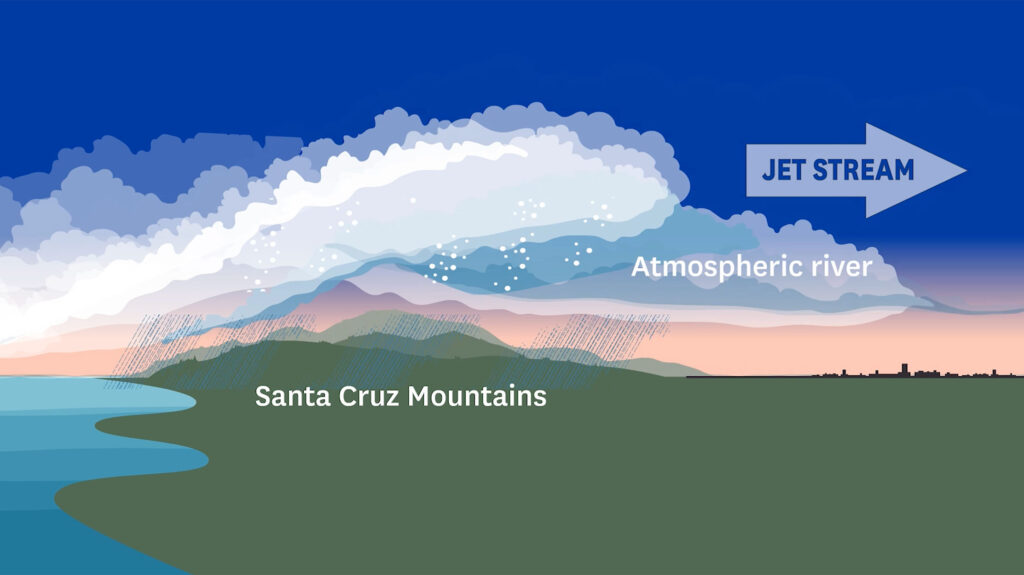Atmospheric Rivers in US

Atmospheric rivers are long, narrow regions in the atmosphere that transport large amounts of water vapor from the tropics to the mid-latitudes. These phenomena are often described as “rivers in the sky,” as they can bring enormous amounts of moisture to areas that are already prone to heavy precipitation.

In the United States, atmospheric rivers are a common weather pattern on the West Coast, particularly in California. These events can bring heavy rainfall and flooding, as well as snowfall in higher elevations. They can also contribute to the development of droughts by moving moisture away from other regions.In recent years, atmospheric rivers have become a more significant concern due to climate change, as warmer ocean temperatures can lead to more frequent and intense events. In early 2022, a series of atmospheric rivers hit the West Coast, causing severe flooding and mudslides in some areas.
With the most recent in a string of atmospheric river storms, California has been drenched, leading to floods and the forced evacuation of roughly 27,000 people in 10 counties. The National Oceanic and Atmospheric Administration (NOAA) estimates that these columns may transport 7.5 to 15 times the typical water flow near the Mississippi River’s mouth.
Effects of the atmospheric river:
These columns of water vapor frequently fall as rain or snow when atmospheric rivers reach land. In most cases, atmospheric rivers are safe. Stronger storms provide the water supply favorable quantities of rain. Based on how much moisture they carry from the tropics to the mid-latitudes, atmospheric rivers are rated on a scale of 1 to 5. Nonetheless, category 4 or 5 atmospheric rivers that deliver a lot of rain can inflict catastrophic harm to people and property by causing major flooding and mudslides. In 2021, an atmospheric river flooded British Columbia with a month’s worth of rain in only two days, causing deadly floods and landslides, destroying entire villages, and cutting off access to the country’s major port.
Are atmospheric rivers widespread?
According to NASA, there are around 11 of these “rivers in the sky” existing on Earth at any given moment. The majority of atmospheric rivers are weak and unartful. In reality, they can deliver much-needed snow or rain. In California, which is suffering from a severe drought, one such storm last year caused mudslides, collapsed power poles, and blocked roads, but it also replenished depleted reservoirs and decreased the danger of wildfires by wetting the dry vegetation there. Studies have previously demonstrated that due to the overheated Earth, atmospheric rivers are bringing less snow in the northern Sierra Nevada, which is instead falling as rain. Flooding may result from some rain that runs off into rivers. Rain may occasionally fall on top of snow, hastening the melting process.